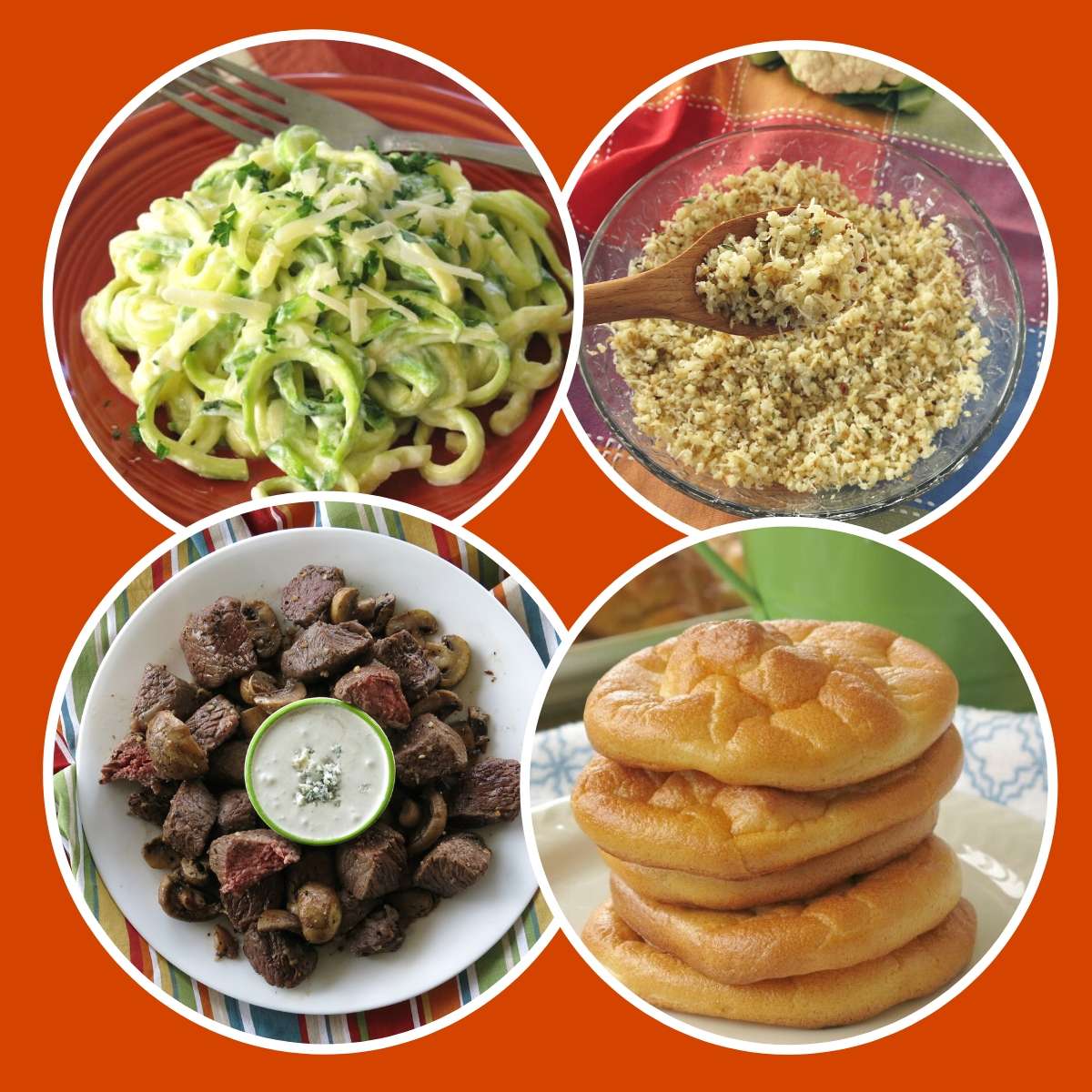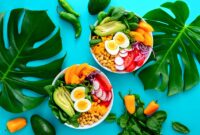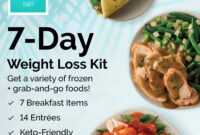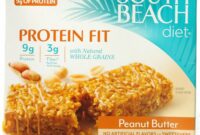South Beach Diet dinner recipes offer a delicious and effective way to achieve your weight loss goals. This guide explores the core principles of the South Beach Diet, focusing on dinner options. We’ll delve into permitted and restricted food groups, providing practical recipe ideas that are both healthy and satisfying. Learn how to create balanced, flavorful meals that align perfectly with the diet’s phases, helping you navigate dinnertime without compromising taste or your weight loss journey.
From simple salmon dishes to vibrant chicken stir-fries, we’ll provide detailed recipes, step-by-step instructions, and meal planning strategies to ensure consistent adherence to the South Beach Diet. We’ll also address common challenges, offering solutions to help you overcome obstacles and maintain your commitment to a healthier lifestyle. This guide is your comprehensive resource for mastering South Beach Diet dinners.
Understanding the South Beach Diet Principles for Dinner
The South Beach Diet, designed for sustainable weight loss, emphasizes specific food choices to regulate blood sugar and promote satiety. Dinner, being a significant meal, requires careful planning to align with the diet’s phases. Understanding the permitted and restricted food groups is crucial for successful adherence.
The South Beach Diet is structured into three phases. Phase 1, the most restrictive, focuses on eliminating sugars and refined carbohydrates to stabilize blood sugar and curb cravings. Phase 2 gradually reintroduces some healthy carbohydrates, while Phase 3 emphasizes maintaining a healthy lifestyle and weight. Dinner choices must reflect the phase’s guidelines to ensure optimal results.
Permitted and Restricted Food Groups for Dinner
The South Beach Diet places strong emphasis on lean protein, healthy fats, and non-starchy vegetables at dinner. Processed foods, sugary drinks, and refined carbohydrates are largely restricted. This approach aims to provide sustained energy without triggering insulin spikes that can lead to fat storage.
Examples of Suitable Foods for South Beach Diet Dinners
Choosing the right foods for dinner is vital for maintaining energy levels and adhering to the diet’s principles. The following examples illustrate suitable options for each macronutrient category.
Healthy Fats
Healthy fats are an essential component of the South Beach Diet, providing satiety and supporting various bodily functions. Examples include: avocado, olive oil (used in moderation for cooking or as a dressing), nuts (almonds, walnuts, pecans – in controlled portions), and fatty fish like salmon or tuna. These fats contribute to a feeling of fullness and help regulate hormone levels.
Lean Proteins
Lean protein sources are crucial for building and repairing tissues, supporting muscle mass, and promoting satiety. Suitable options include: grilled chicken breast, fish (cod, halibut), lean ground turkey, tofu, and beans (in moderation, depending on the phase). These choices provide sustained energy and contribute to muscle maintenance.
Non-Starchy Vegetables
Non-starchy vegetables are encouraged in all phases of the South Beach Diet due to their high fiber and nutrient content, while being low in carbohydrates. These help regulate digestion and promote a feeling of fullness without significantly impacting blood sugar levels. Examples include: broccoli, spinach, asparagus, cauliflower, peppers, zucchini, and mushrooms. These vegetables add volume and nutritional value to dinner without the negative impact of starchy vegetables.
Recipe Ideas
The South Beach Diet emphasizes lean proteins, healthy fats, and plenty of non-starchy vegetables. These recipes offer delicious and easy-to-prepare dinner options that adhere to the diet’s principles, promoting weight loss and overall well-being. Remember to adjust portion sizes to meet your individual caloric needs.
South Beach Diet Dinner Recipe Table
The following table provides three diverse and straightforward South Beach Diet-compliant dinner recipes. Each recipe is designed for ease of preparation, using readily available ingredients.
| Recipe Name | Ingredients | Instructions | Serving Size |
|---|---|---|---|
| Mediterranean Salmon with Asparagus | 1 salmon fillet (6 oz), 1 bunch asparagus, 1 tbsp olive oil, 1 lemon (juiced), salt, pepper, 1 clove garlic (minced), 1/4 cup chopped red onion | Preheat oven to 400°F (200°C). Toss asparagus with olive oil, salt, and pepper. Roast for 10 minutes. Place salmon on a baking sheet, drizzle with olive oil, lemon juice, and sprinkle with garlic and red onion. Bake for 12-15 minutes, or until cooked through. | 1 |
| Chicken and Vegetable Skewers | 1 lb boneless, skinless chicken breast (cubed), 1 red bell pepper (cubed), 1 green bell pepper (cubed), 1 zucchini (cubed), 1 red onion (cubed), 2 tbsp olive oil, 1 tbsp lemon juice, salt, pepper, herbs (e.g., oregano, thyme) | Marinate chicken in olive oil, lemon juice, salt, pepper, and herbs for at least 30 minutes. Thread chicken and vegetables onto skewers. Grill or bake at 400°F (200°C) for 15-20 minutes, or until chicken is cooked through. | 2 |
| Shrimp Scampi with Zucchini Noodles | 1 lb shrimp (peeled and deveined), 2 medium zucchini (spiralized into noodles), 2 cloves garlic (minced), 2 tbsp olive oil, 1/4 cup dry white wine, 1 tbsp lemon juice, salt, pepper, red pepper flakes (optional) | Sauté garlic in olive oil until fragrant. Add shrimp and cook for 2-3 minutes per side. Add zucchini noodles, white wine, lemon juice, salt, pepper, and red pepper flakes (if using). Cook for 2-3 minutes, or until zucchini is tender-crisp. | 1 |
South Beach Diet Salmon Recipe with Nutritional Benefits
This recipe highlights the nutritional advantages of salmon and accompanying vegetables.
Recipe: Lemon Herb Roasted Salmon with Broccoli
Ingredients: 6 oz salmon fillet, 1 cup broccoli florets, 1 tbsp olive oil, 1 lemon (sliced), fresh herbs (dill, parsley), salt, pepper.
Instructions: Preheat oven to 400°F (200°C). Toss broccoli with olive oil, salt, and pepper. Roast for 10 minutes. Place salmon on a baking sheet, drizzle with olive oil, top with lemon slices and herbs. Bake for 12-15 minutes, or until cooked through. Serve salmon with roasted broccoli.
Nutritional Benefits: Salmon is rich in omega-3 fatty acids, crucial for heart health and brain function. Broccoli is an excellent source of fiber, vitamin C, and antioxidants. Olive oil provides healthy monounsaturated fats. Lemon adds vitamin C and enhances flavor.
South Beach Diet Chicken Stir-Fry
This recipe demonstrates techniques to minimize added sugars and unhealthy fats in a classic stir-fry.
Recipe: South Beach Chicken Stir-Fry
Ingredients: 1 lb boneless, skinless chicken breast (sliced), 1 tbsp olive oil, 1 red bell pepper (sliced), 1 green bell pepper (sliced), 1 onion (sliced), 1 cup broccoli florets, 1/2 cup snow peas, 2 cloves garlic (minced), 2 tbsp low-sodium soy sauce (or tamari), 1 tbsp rice vinegar, 1 tsp grated ginger.
Instructions: Stir-fry chicken in olive oil until cooked through. Add onion, bell peppers, and garlic; stir-fry for 2-3 minutes. Add broccoli and snow peas; stir-fry for another 2-3 minutes. Stir in soy sauce, rice vinegar, and ginger. Cook for 1 minute more. Serve immediately.
Techniques to Minimize Added Sugars and Unhealthy Fats: Using olive oil instead of other high-fat cooking oils minimizes unhealthy fats. Choosing low-sodium soy sauce or tamari reduces sodium intake. Avoiding added sugars, common in many stir-fry sauces, is crucial for maintaining a low-glycemic index meal. The recipe relies on the natural flavors of the vegetables and herbs to enhance the taste, eliminating the need for excessive amounts of sugar or high-fat sauces.
Meal Planning and Portion Control
Successful weight management on the South Beach Diet hinges on thoughtful meal planning and precise portion control. By strategically planning your dinners and understanding appropriate serving sizes, you can effectively manage your calorie intake and achieve your weight loss goals. This section will provide a sample weekly dinner plan, discuss strategies for portion control, and demonstrate how to adapt existing recipes to align with the diet’s principles.
A Sample South Beach Diet Dinner Meal Plan
The following sample one-week dinner meal plan provides calorie estimates. Remember that individual caloric needs vary depending on factors such as age, activity level, and metabolism. These are approximations and should be adjusted to suit your personal requirements. Consult a nutritionist or dietitian for personalized guidance.
- Monday: Grilled Salmon (4oz) with Asparagus (1 cup) and Quinoa (½ cup) – Approximately 450 calories
- Tuesday: Chicken Stir-fry (4oz chicken) with mixed vegetables (1.5 cups) and brown rice (½ cup) – Approximately 400 calories
- Wednesday: Lean Ground Turkey (4oz) Chili with a side salad (2 cups) – Approximately 380 calories
- Thursday: Baked Cod (4oz) with roasted broccoli (1 cup) and sweet potato (½ medium) – Approximately 420 calories
- Friday: Shrimp Scampi (4oz shrimp) with zucchini noodles (2 cups) – Approximately 350 calories
- Saturday: Turkey Meatloaf (4oz) with green beans (1 cup) – Approximately 400 calories
- Sunday: Chicken Breast (4oz) with roasted Brussels sprouts (1 cup) and a small baked potato (1 medium) – Approximately 480 calories
Strategies for Managing Portion Sizes
Effective portion control is crucial for weight loss on the South Beach Diet. Visual cues and mindful eating techniques can significantly aid in this process. Using smaller plates, measuring food, and paying attention to hunger and fullness cues are key strategies. For example, instead of piling food onto a large dinner plate, use a smaller salad plate. This creates a visual perception of a larger portion, even though the actual quantity is less. Measuring food using measuring cups and spoons, especially in the beginning, can help establish a baseline understanding of appropriate serving sizes. Finally, practicing mindful eating—paying attention to your body’s hunger and fullness signals—helps prevent overeating.
Adapting Existing Recipes to the South Beach Diet
Many familiar recipes can be adapted to fit the South Beach Diet’s guidelines by making simple substitutions. For instance, a traditional lasagna recipe, often heavy in cheese and refined carbohydrates, can be adapted by using whole-wheat pasta (in moderation), reducing the cheese quantity, and incorporating more vegetables like spinach and zucchini. Another example is replacing white rice with brown rice or quinoa in dishes like stir-fries or paella. This substitution provides added fiber and reduces the glycemic index of the meal. Furthermore, swapping high-fat meats like bacon or sausage with leaner options like turkey bacon or chicken sausage significantly improves the nutritional profile of a dish while maintaining its flavor.
Addressing Common Challenges and Variations
Successfully navigating the South Beach Diet, particularly at dinner, requires understanding potential hurdles and adapting strategies accordingly. Many find the initial adjustment challenging, especially when accustomed to higher-carbohydrate evening meals. This section addresses common pitfalls and offers solutions for maintaining adherence and managing cravings.
Common pitfalls during the South Beach Diet dinner phase often involve a lack of planning, leading to impulsive, less-than-ideal food choices. Another frequent challenge is managing cravings for sugary or starchy foods, particularly in the evening when willpower may be lower. Finally, understanding the nuances of the different phases of the South Beach Diet and how they impact dinner choices can be confusing.
Strategies for Managing Cravings and Maintaining Adherence
Effective craving management involves proactive planning and substitution techniques. Preparing healthy, satisfying dinner options in advance prevents resorting to less-suitable alternatives when hunger strikes. This might involve batch cooking healthy meals on the weekend, prepping vegetables for quick stir-fries, or stocking the fridge with readily available, approved snacks. When cravings arise, strategies like drinking plenty of water, focusing on mindful eating (paying close attention to the taste and texture of food), and engaging in a distracting activity can help. Substituting less-healthy options with healthier alternatives is crucial. For example, instead of reaching for chips, try a handful of almonds or a small bowl of berries.
Variations in South Beach Diet Approaches and Dinner Recommendations
The South Beach Diet isn’t a monolithic approach; variations exist in its implementation. While the core principles remain consistent – emphasizing healthy fats, lean proteins, and non-starchy vegetables – the specific recommendations can differ slightly depending on individual needs and preferences. For example, some individuals might choose to incorporate more fish or poultry in their dinners than others, while maintaining a focus on low-glycemic index vegetables. Others may find that incorporating healthy fats like avocado or olive oil into their dinner helps manage satiety and prevent late-night cravings. The key is to find a balanced approach that works for you while staying true to the diet’s fundamental principles. A common variation involves adjusting the carbohydrate intake based on individual metabolic response and activity levels. A more active individual might tolerate a slightly higher carbohydrate intake at dinner compared to someone with a sedentary lifestyle. It’s crucial to listen to your body and adjust accordingly, while always prioritizing whole, unprocessed foods.
Understanding Phase-Specific Dinner Guidelines
The South Beach Diet is typically divided into phases, each with slightly different dietary recommendations. The initial phase focuses on strictly limiting carbohydrates, emphasizing lean proteins, healthy fats, and non-starchy vegetables at dinner. Subsequent phases gradually reintroduce some healthy carbohydrates, but still emphasize the importance of controlled portions and appropriate food choices. For example, a Phase 1 dinner might consist of grilled chicken breast with steamed broccoli and a small serving of olive oil and lemon juice. In later phases, a small portion of quinoa or brown rice might be added to this meal, but the overall focus on lean protein and non-starchy vegetables remains.
Concluding Remarks
Mastering South Beach Diet dinner recipes is key to long-term success. By understanding the principles, utilizing the provided recipes, and employing effective meal planning strategies, you can enjoy delicious and satisfying dinners while achieving your weight loss goals. Remember to focus on portion control, incorporate a variety of healthy ingredients, and adapt recipes to suit your preferences. This approach will empower you to create a sustainable and enjoyable eating plan that supports your overall health and well-being.




